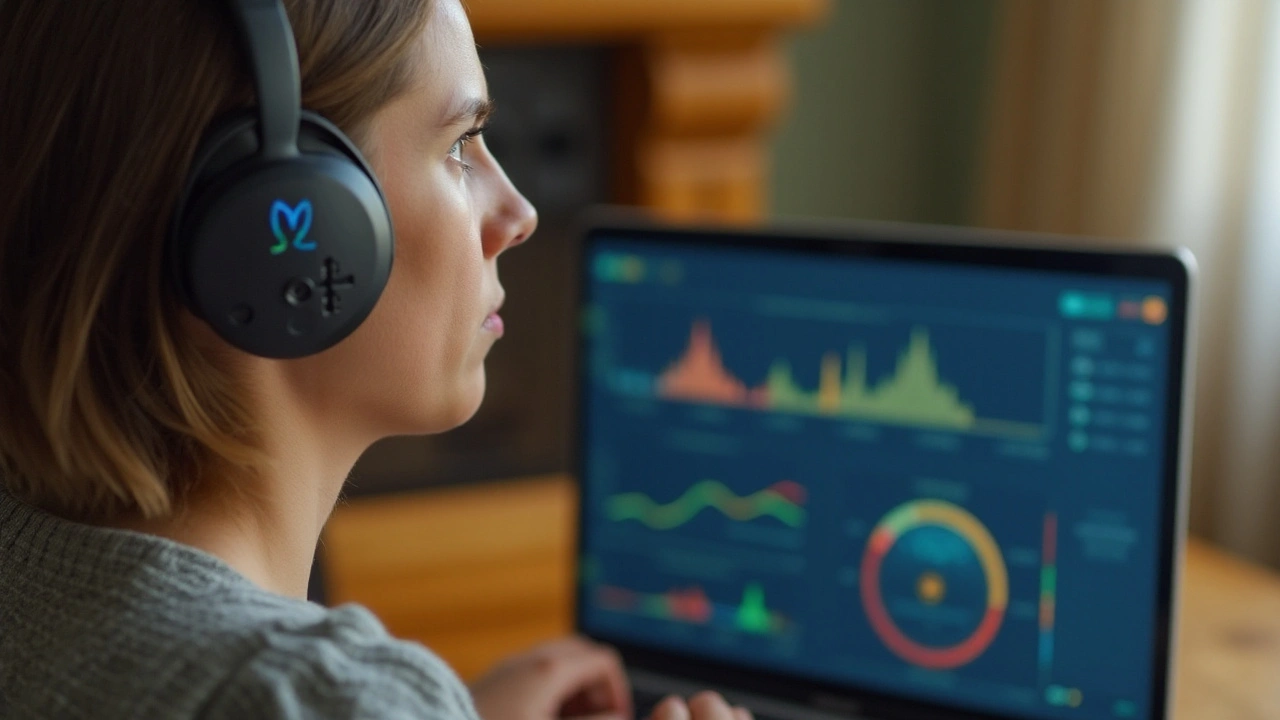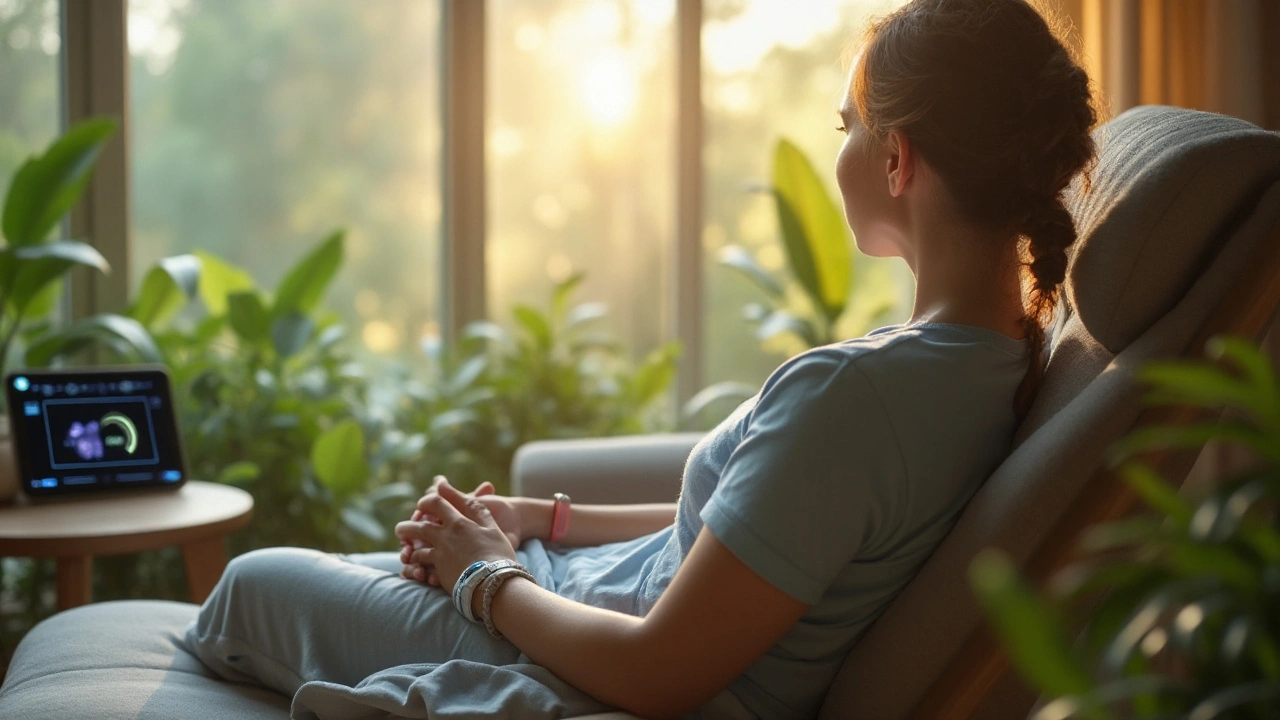In recent years, the concept of biofeedback has gained significant traction as a method to enhance mental health. What if you could learn to control the things your body does involuntarily? This is exactly what biofeedback offers—a pathway to gain mastery over physiological processes that we generally consider automatic.
Imagine using technology to become more in tune with your body's signals, allowing you to manage stress and reduce symptoms of various mental health issues. Biofeedback is all about harnessing the power of our own biology to foster a better sense of well-being. And the best part? It is non-invasive and tailored to our individual needs, making it a versatile tool in the quest for mental wellness.
- Understanding Biofeedback
- Benefits for Mental Health
- Practical Biofeedback Techniques
- Incorporating Biofeedback into Daily Life
Understanding Biofeedback
Biofeedback is an intriguing process that invites individuals into a deeper connection with their own biology. By using electronic monitoring devices, it offers a window into the body's internal workings, such as muscle tension, heart rate, and skin temperature. The central idea is to provide real-time data that individuals can use to understand what is happening inside their bodies, especially during times of stress or anxiety. This method doesn't just reveal what's beneath the surface; it empowers people by making those once-invisible processes visible, allowing for deliberate actions to influence them.
This technique has found its place within the mental health realm as a non-invasive option for individuals aiming to gain control over their body's physiological responses. According to the Association for Applied Psychophysiology and Biofeedback, biofeedback is widely used to help manage conditions like high blood pressure, tension headaches, and anxiety disorders. By learning to adjust processes such as breath control, muscle relaxation, and heart rate, people begin to cope more efficiently with stress, ultimately leading to better mental health outcomes.
Essentially, biofeedback aims to reduce stress by teaching individuals to apply what they've learned from the feedback into their everyday living. Imagine the relief of turning one's heartbeat, which often races under anxiety, into a lullaby of calm through practiced self-regulation. It promises a shift from the body's reactionary state to one of mindful action. As Dr. Mark Schwartz, a renowned psychologist, noted, "Biofeedback does not cure a problem, but it can help enhance control over symptoms."
This insight emphasizes the role of biofeedback as a supportive mechanism rather than a solitary solution.
Embracing biofeedback as a tool requires a commitment to learning and practicing these techniques consistently. It’s not a quick fix, but rather a journey towards mastery over one's physiological functions with each session strengthening self-awareness. Additionally, the non-invasive nature of this practice aligns well with those who might otherwise shy away from medicinal approaches. Given its nature, biofeedback is highly personalized, making it accessible to a wide array of individuals looking to improve their mental health. Through this individualized approach, everyone is empowered to harness their natural ability to influence their bodily systems for mindful wellbeing.

Benefits for Mental Health
Biofeedback has unlocked a treasure trove of possibilities for enhancing mental health, with its ability to teach us how to fine-tune the way we interact with our own bodies. An intriguing aspect is how it helps tackle anxiety by making us more aware of our physiological responses. Anxiety often comes with rapid heartbeat, muscle tension, and shallow breathing. By using biofeedback, individuals can learn to recognize these signs early and implement strategies to calm themselves, essentially regaining control over their nervous system.
Another remarkable benefit of biofeedback lies in its application for people experiencing depression. Depression, as many know, isn't just about feeling sad; it's a complex interplay of various emotions and physical symptoms. With biofeedback, the focus is on breaking the cycle of the body's stress response. By receiving real-time feedback on bodily processes, individuals can practice relaxation techniques more effectively, which, over time, can contribute to mood stability.
"Biofeedback works by showing patients how to modify physiological activity to improve health. By providing real-time feedback on the body's processes, it effectively reduces symptoms associated with both anxiety and depression," states a study by the Mayo Clinic.Moreover, biofeedback can be incredibly helpful for those managing chronic pain, which often negatively impacts mental health. For instance, by learning to control muscle tension through biofeedback, patients often report reduced pain levels, leading to improvements in not only physical but also mental well-being. This is particularly beneficial for conditions such as migraines and fibromyalgia, where stress often exacerbates physical symptoms.
For stress management, biofeedback has become an invaluable ally. Life's pressures can easily tip the balance and disrupt mental peace. Biofeedback offers a practical solution by teaching techniques such as progressive muscle relaxation and deep breathing. Real-time monitoring ensures these methods are applied correctly, maximizing their effectiveness. By contributing to a harmonious balance between mind and body, biofeedback supports overall better mental health, often with fewer side effects than medication-driven approaches.
An unexpected but impactful benefit of biofeedback is the boost it offers to sleeping patterns. Sleep disorders can further strain mental health, creating a cycle of fatigue and anxiety. Through biofeedback, easing into a state of relaxation before bedtime becomes a learned skill, sometimes replacing the need for sleeping aids and enhancing sleep quality naturally. As more and more individuals seek non-pharmacological solutions, biofeedback provides a beacon of hope for better mental health outcomes.
Lastly, the collaborative nature of biofeedback empowers individuals, making them active participants in their wellness journey. As they become more attuned to the nuanced signals their body sends, there's an enhanced sense of personal efficacy. The autonomy gained through this self-discovery process often trickles into other aspects of life, further solidifying the path to improved mental health.

Practical Biofeedback Techniques
Biofeedback offers a fascinating dive into the intersection of technology and self-regulation, opening doors to explore how we can improve mental health through conscious bodily control. The true allure of biofeedback lies in its accessibility and personalization, delivering techniques that not only fit into our busy lives but foster a deeper self-awareness in the process. Through various methods and devices, practitioners can track physiological changes, transforming unseen bodily processes into understandable data patterns. This visually captures how stress triggers may affect our heart rate or muscle tension, offering a clear path to self-improvement.
One particularly effective technique involves leveraging simple breathing exercises, which can be significantly enhanced with devices measuring heart rate variability. These sensors act like coaches, providing feedback that helps refine breathing patterns to improve mental focus. As users engage, the impacts become clear - a heightened ability to remain grounded in the face of anxiety-inducing situations. It provides a tangible way to watch the body’s response to shifting emotions, helping to gradually build resilience against stressors. Stephen Elliot, a renowned biofeedback specialist, once noted, "Breathing is your best tool; it is ever-present and responds quickly to your input," emphasizing the central role controlled breathing plays in biofeedback.
Thermal biofeedback is another intriguing method that involves the regulation of body temperature, commonly used to combat tension headaches and anxiety. With tiny sensors attached to fingers, individuals learn to harness the power of mind over body—keeping themselves warmer during times of stress. This seemingly small ability is crucial because, typically, stress leads to the extremities becoming colder, signaling the body’s fight-or-flight response. Integrating such techniques could enhance one's arsenal against the persistent foes of stress and anxiety, reflecting a shift toward holistic health approaches.
In biofeedback clinics, Electroencephalogram (EEG) feedback introduces a more advanced strategy, mapping brainwave patterns to manage stress, attention deficits, or anxiety conditions. The assessment begins by placing electrodes along the scalp, transforming real-time brain activity into a visual form that users can watch. This powerful visualization allows individuals to observe how their mental state influences brain waves, offering insights to consciously shift brainwave patterns for better focus or relaxation. Although sophisticated, these techniques have found their way into everyday digital applications, inviting broader public engagement.
Biofeedback exercises have paved the way for innovative home-use devices, broadening access beyond clinical settings. Handy gadgets and mobile applications offer users the ability to monitor vital signs like heart rate and skin temperature, delivering biofeedback training at one's convenience. This advancement reflects an important trend— the empowerment of individuals in managing their health proactively. The growing appeal lies in the straightforward, intuitive nature of these applications that seamlessly integrate into daily routines. Experts predict a continued upward trend, as technology advances and devices become more affordable and easier to use, further democratizing mental health improvement through biofeedback.

Incorporating Biofeedback into Daily Life
Integrating biofeedback into your daily routine can feel intimidating at first, but with the right approach, it becomes a rewarding practice. The first step is education and understanding how this technique works for you specifically. Each person's body responds differently to stimuli, so it's essential to start with baseline measurements to know your natural physiological state. Over time, you'll become familiar with how your body reacts to stress and relaxation, making it easier to identify patterns and triggers.
A great way to start is by setting aside a few minutes each day dedicated to biofeedback practice. Consistency is key, and practicing regularly will help reinforce the mind-body connection. During these sessions, use sensors that connect to a device, which monitors physiological processes such as heart rate, muscle tension, and skin temperature. The device provides feedback in real-time, often visually or audibly, allowing you to adjust your physiological state consciously.
"Biofeedback offers a unique avenue for individuals to learn self-regulation skills that are not only beneficial for mental health but also for overall well-being," says Dr. Tim Cahill, a leading expert in behavioral medicine.
Carve out designated quiet time to engage in relaxation techniques such as deep breathing or meditation alongside your biofeedback sessions. This holistic approach enhances the benefits as your mind and body learn to communicate more effectively. Start with simple exercises, focusing on synchronizing your breath with feedback from your device. As you get comfortable, you can incorporate more complex techniques like guided imagery or mindfulness practices, which further improve your body's stress response.
Tracking progress using a journal can be profoundly impactful. Jot down notes on what works during your sessions and any changes you notice throughout the day. Over weeks and months, this record becomes a valuable tool for understanding your internal cues. You might discover that certain times of day or specific activities trigger stress, providing insight into behaviors and environments you may want to alter.
Lastly, don't hesitate to reach out to professionals who specialize in biofeedback. They can offer personalized guidance and troubleshoot any challenges you experience, maximizing the benefits of your practice. Many therapists and coaches are now incorporating biofeedback into their sessions, offering clients a comprehensive approach to mental health management. By consciously integrating biofeedback techniques, you'll find new ways to connect with yourself, manage stress, and improve your mental health outcomes.





